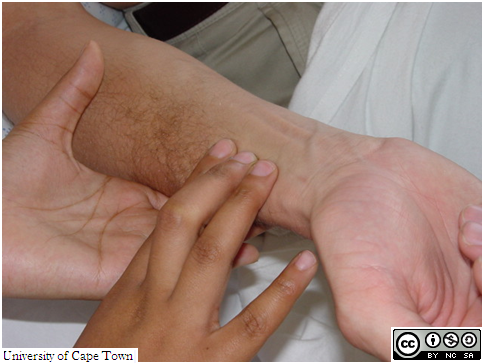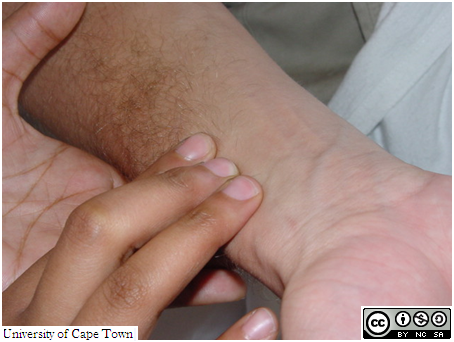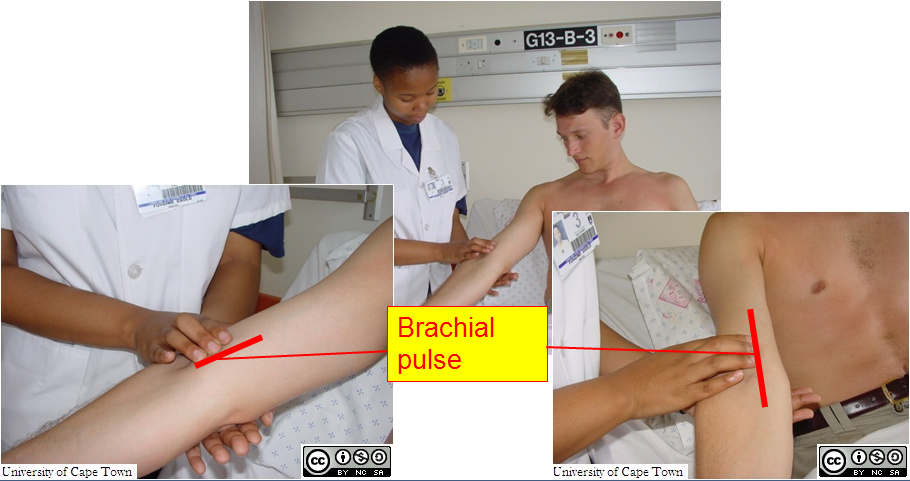Assess the pulse
Carefully palpate, localise and assess the radial pulse, as shown here. Use the left hand to support the patient?s forearm; his wrist must be fully extended to stretch the artery. Lay the pulps of the fingers of the left hand just within the radial border of the forearm and identify the pulse.


See how the left hand supports the patient?s forearm with their wrist fully extended to stretch the artery. Note the careful positioning of the examining fingers.
| AFRIKAANS | TRANSCRIPT | XHOSA |
|---|---|---|
| Keep still for a minute while I count your heart beat. / Hou ?n minuut/oomblik stil terwyl ek u polsslag meet. / Ndicela ungagungqi okomzuzwana ngelixa ndibalayo. | ||
| I?m going to check your pulse. / Ek gaan u polsslag meet. / Ndiza kujonga ukubetha komthabo wakho. | ||
| Give me your arm please. / Gee my u arm, asseblief. / Ndicela undinike ingalo yakho. |
In order to assess the volume and character of the pulse, it is best to palpate an artery larger than the radial, and the brachial pulse is most convenient. This artery runs in the antecubital fossa, about one third of the way across from the medial side of the supinated forearm.
Use the left hand to support the patient?s arm and ensure that the elbow is fully extended.

Make sure that you have described all the following properties of the pulse before continuing:
- Rate
- Rhythm
- Volume
- Character
Your textbooks will give you the information you need for this.
